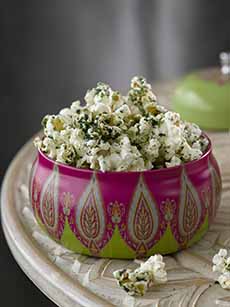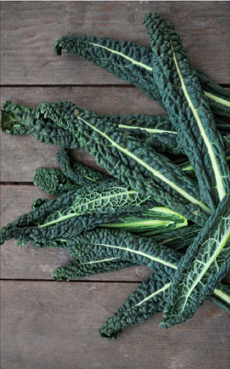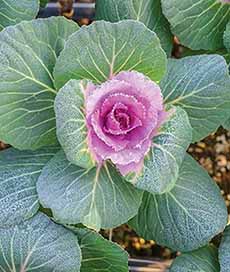Kale Popcorn Recipe, Kale Types & The History Of Kale
|
If you’re a member of the kale cult, here’s a recipe for your repertoire: popcorn with kale (photo #1). It’s easy to make, with purchased popcorn and kale chips. Or, pop your own and microwave kale into chips (photo #5). Popcorn is already a better-for-you, whole grain snack. Now, you can add this recipe from the National Popcorn Board. They’re rich in powerful, cancer-fighting antioxidants, phytonutrients and carotenoids. It’s also an excellent source of calcium, fiber, iron, manganese, potassium and vitamins A, B6, C and K. Cooking may destroy the phytochemicals, which is why raw kale salad is popular among health-focused consumers in-the-know. > National Kale Day is celebrated on the first Wednesday of October. > Do you know the different types of kale? Check them out below (and in photos #2, #3, #4, and #5). > Make kale chips in the microwave. > The history of kale is also below. > The history of popcorn. You can purchase kale chips or make them in the microwave (the recipe). Lime zest gives the snack a bit of zip. Ingredients For 10 Cups 1. PLACE the popcorn in a large bowl. Whisk in the lime zest, lime juice and melted butter. Toss to coat the popcorn. 2. SPRINKLE the kale over the popcorn, mixing to distribute evenly. Kale, also called leaf cabbage, is one of the cultivars of cabbage (Brassica oleracea). Kale plants have green or purple leaves. The central leaves do not form a head like cabbage but are loose, like romaine. The name is derived from the Northern Middle English cale (compare Scots kail) for various cabbages. That word evolved from the Latin word for cabbage, caulis. Kale originated in the eastern Mediterranean and Asia Minor, where it was cultivated before 2000 B.C.E. By 400 B.C.E., curly-leaf and flat-leaf varieties of cabbage existed in Greece. Referred to by the Romans as Sabellian kale, these are considered to be the ancestors of modern kales. Records of cabbages in western Europe date to the 13th century. In 14th-century England, records distinguish between the hard-heading cabbage and loose-leaf kale. Russian kale was introduced into Canada, and then to the U.S., by Russian traders in the 19th century. No less than Thomas Jefferson had experimented with several varieties of kale at Monticello in the early 1800s. The superfood (a word coined in the early 20th century) has long been popular in northern Europe. For most of the 20th century, kale was primarily used in the U.S. for decorative purposes. It became more widely consumed during World War II as part of the Victory Garden movement, but its modern resurgence happened much later. People became more aware of it as an edible vegetable in the 1990s, with the increasing focus on nutrition. Mainstream awareness of the benefits of antioxidants grew in the 1990s and early 2000s, with kale on the “highly recommended” list of cruciferous vegetables (the Brassicas, listed above). The big push came in the early 2010s, largely due to the efforts of the American Kale Association and strategic marketing campaigns to rebrand kale from a niche health food into a mainstream superfood. In addition, celebrity chefs like Alice Waters and the health-conscious movement in general, contributed to kale’s rise in popularity. The expansion of farmers markets, juicing trends, and social media influencers also played a role in making kale a household staple. It became pegged as a “nutritional powerhouse” as well as a superfood, and has remained on healthful-eating list ever since. Kale varieties can be differentiated by the length of the stem and the type of leaf (photo #3). Stems vary from short to long, and leaf colors include light green, medium green, dark green and violet-green, plus violet-brown. Leaf styles include: Ornamental kale or rebor kale is yet another variety with many cultivars (see one of them in photo #4). It is grown as a decorative plant, and even used in floral arrangements. The center rosette can be blue, lavender, pink, red or violet. While ornamental kale is as edible as any variety, the tough leaves are not as palatable (source). CHECK OUT WHAT’S HAPPENING ON OUR HOME PAGE, THENIBBLE.COM. |
|
|
|
|
||








